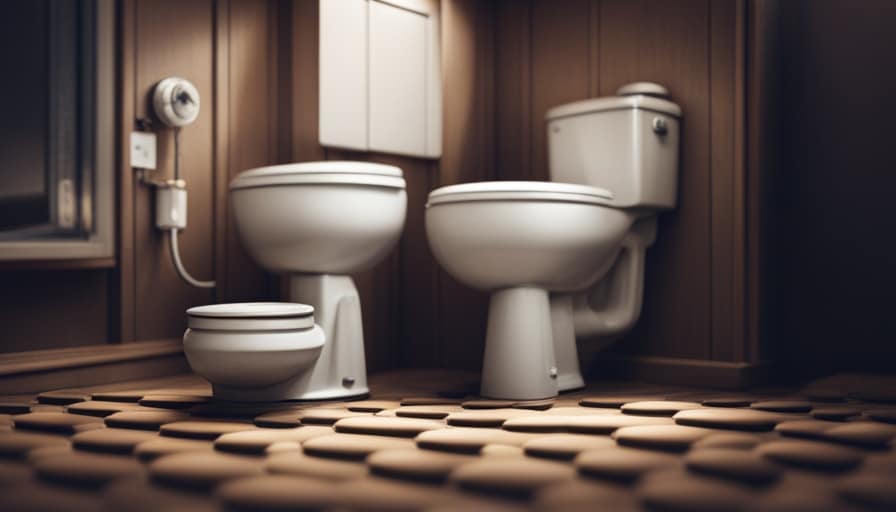Did you know that small bugs can cause great damage to your beloved indoor plants? It can be frustrating to witness them feeding on your plants and causing harm. However, do not worry! I am here to offer my knowledge and expertise on eliminating these annoying pests.
With natural remedies, chemical solutions, and preventive measures, we can ensure a bug-free environment for our plants. Let’s dive into the world of tiny bugs in house plants and discover effective ways to eliminate them.
Key Takeaways
- Accurate identification of the specific bugs is essential for effective control measures.
- Natural remedies such as neem oil, essential oils, and homemade insecticidal soap can be effective in getting rid of tiny bugs.
- Cultural practices like removing affected leaves, quarantining infested plants, and maintaining proper plant hygiene can help prevent and control infestations.
- Chemical control methods should be chosen carefully, following instructions on the insecticide label, and non-toxic alternatives should be considered.
Identifying the Tiny Bugs in Your House Plants
I can help you in identifying the tiny bugs in your house plants. As an entomologist with expertise in controlling infestations and common house plant pests, I’m knowledgeable about the behavior, biology, and habits of various insects and pests that can affect your plants.
It’s crucial to accurately identify the specific bugs infesting your house plants in order to effectively address the issue. Common house plant pests include aphids, mealybugs, spider mites, and fungus gnats. Each of these pests has distinct characteristics and behaviors that can be observed under close inspection.

By understanding the specific bugs affecting your plants, you can then implement appropriate control measures to eliminate the infestation.
Now, let’s move on to understanding the potential damage caused by these tiny bugs in house plants.
Understanding the Potential Damage Caused by Tiny Bugs in House Plants
How can these tiny bugs in house plants potentially cause damage?
Tiny bugs in house plants can pose potential risks and cause damage in various ways. Here are some common signs of damage caused by these pests:

- Stunted growth: Infested plants may exhibit slow or stunted growth due to the pests feeding on the plant’s nutrients.
- Yellowing or wilting leaves: Bugs like aphids or spider mites can cause leaves to turn yellow or wilt due to their feeding activities.
- Leaf discoloration: Some pests, such as mealybugs or thrips, can cause discoloration on plant leaves, resulting in spots or patches.
- Weakened plant health: Continuous infestation can weaken the overall health of the plant, making it more vulnerable to diseases and other pests.
To effectively address the issue, it’s important to identify the specific bugs affecting your house plants and take appropriate measures to control and eliminate them.
Natural Remedies for Getting Rid of Tiny Bugs in House Plants
One effective natural remedy for eliminating tiny bugs in house plants is neem oil. Neem oil is derived from the seeds of the neem tree and has been used for centuries as a natural insecticide. It works by disrupting the life cycle of the bugs, preventing them from reproducing and causing further damage to the plants.
Another natural option is using essential oils, such as peppermint or lavender oil, which have insect-repellent properties. Simply dilute a few drops of the essential oil in water and spray it on the affected plants.
Additionally, a homemade insecticidal soap made from a mixture of liquid soap and water can also be effective in controlling bugs on house plants. Remember to test these remedies on a small part of the plant before applying them fully.

Transitioning into the next section on chemical solutions, while natural remedies can be effective, sometimes stronger measures may be necessary to completely eliminate the infestation.
Chemical Solutions for Eliminating Tiny Bugs in House Plants
Using insecticides is one option for getting rid of tiny bugs in house plants. When dealing with an infestation, it’s important to consider the specific insect species and choose an appropriate chemical solution. Here are some key points to keep in mind:
-
Identify the bugs: It’s crucial to accurately identify the type of bugs infesting your plants. This will help determine the most effective insecticide to use.
-
Choose the right insecticide: Select an insecticide that targets the specific bugs without harming the plants. Look for non-toxic alternatives to minimize any potential risks.

-
Follow instructions carefully: Read and follow the instructions on the insecticide label. This will ensure proper application and prevent any damage to your plants or yourself.
-
Monitor and reapply if necessary: Keep an eye on your plants after treatment. If the infestation persists, consider reapplying the insecticide as directed.
Preventing Future Infestations of Tiny Bugs in House Plants
By regularly inspecting and cleaning my house plants, as well as implementing proper watering and drainage techniques, I can effectively prevent future infestations of tiny bugs.
To promote healthy growth in house plants and deter bugs, it’s important to provide the right care. First, make sure to choose plants that are suitable for the indoor environment and maintain the ideal temperature and humidity levels.

Additionally, avoid overwatering as it can create a moist environment that attracts pests. It’s also crucial to avoid overcrowding the plants, as this can lead to poor air circulation and increased vulnerability to bugs.
Furthermore, keep an eye out for any signs of infestation, such as yellowing leaves or webbing, and take immediate action if detected.
Frequently Asked Questions
How Do I Know if the Tiny Bugs in My House Plants Are Harmful to the Plants?
If you’re wondering whether the tiny bugs in your house plants are harmful, it’s important to identify them first. Once you know what you’re dealing with, you can take steps to prevent infestation and use organic methods to control them.
Can I Use Dish Soap to Get Rid of the Tiny Bugs in My House Plants?
Yes, you can use dish soap to get rid of tiny bugs in house plants. However, while effective, there are alternative natural remedies that may be more gentle on your plants.

Are There Any Specific Plants That Are More Prone to Infestations by Tiny Bugs?
Some plants are more prone to infestations by tiny bugs. To prevent infestations, it’s important to choose plants that are less attractive to pests and regularly inspect and treat them as needed.
How Long Does It Usually Take for Natural Remedies to Effectively Get Rid of the Tiny Bugs?
To speed up the process of eliminating tiny bugs in house plants, try using natural remedies such as neem oil or insecticidal soap. These can be effective in getting rid of the pests without harming the plants.
What Should I Do if the Infestation of Tiny Bugs in My House Plants Persists Despite Using Chemical Solutions?
If the infestation persists despite chemical solutions, I recommend trying alternative methods and non-chemical solutions. These may include using natural predators, such as ladybugs, or implementing cultural practices like properly watering and ventilating the plants.
Conclusion
In conclusion, it’s crucial to promptly address the issue of tiny bugs in house plants to prevent further damage.

One interesting statistic to consider is that a single female fungus gnat can lay up to 200 eggs in just a few days, leading to a rapid infestation.
By implementing natural remedies or chemical solutions, and taking preventive measures, you can effectively eliminate these pests and ensure the health and vitality of your house plants.
I’m Theodore, and I love tiny houses. In fact, I’m the author of Tiny House 43, a book about tiny houses that are also tree houses. I think they’re magical places where imaginations can run wild and adventures are just waiting to happen.
While tree houses are often associated with childhood, they can be the perfect adult retreat. They offer a cozy space to relax and unwind, surrounded by nature. And since they’re typically built on stilts or raised platforms, they offer stunning views that traditional homes simply can’t match.
If you’re looking for a unique and romantic getaway, a tree house tiny house might just be the perfect option.
















